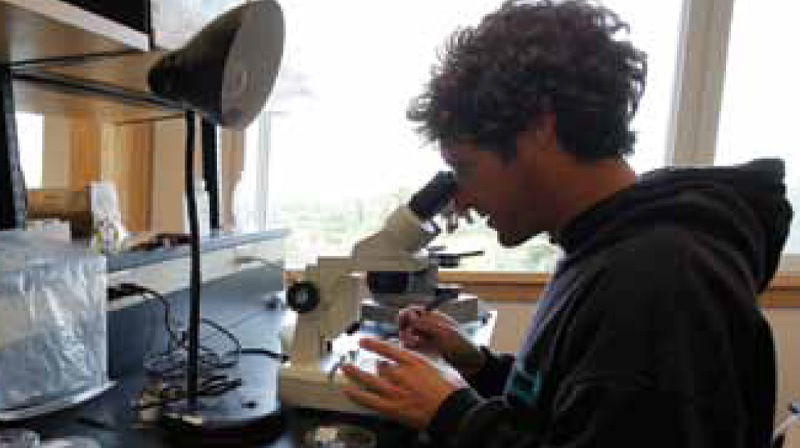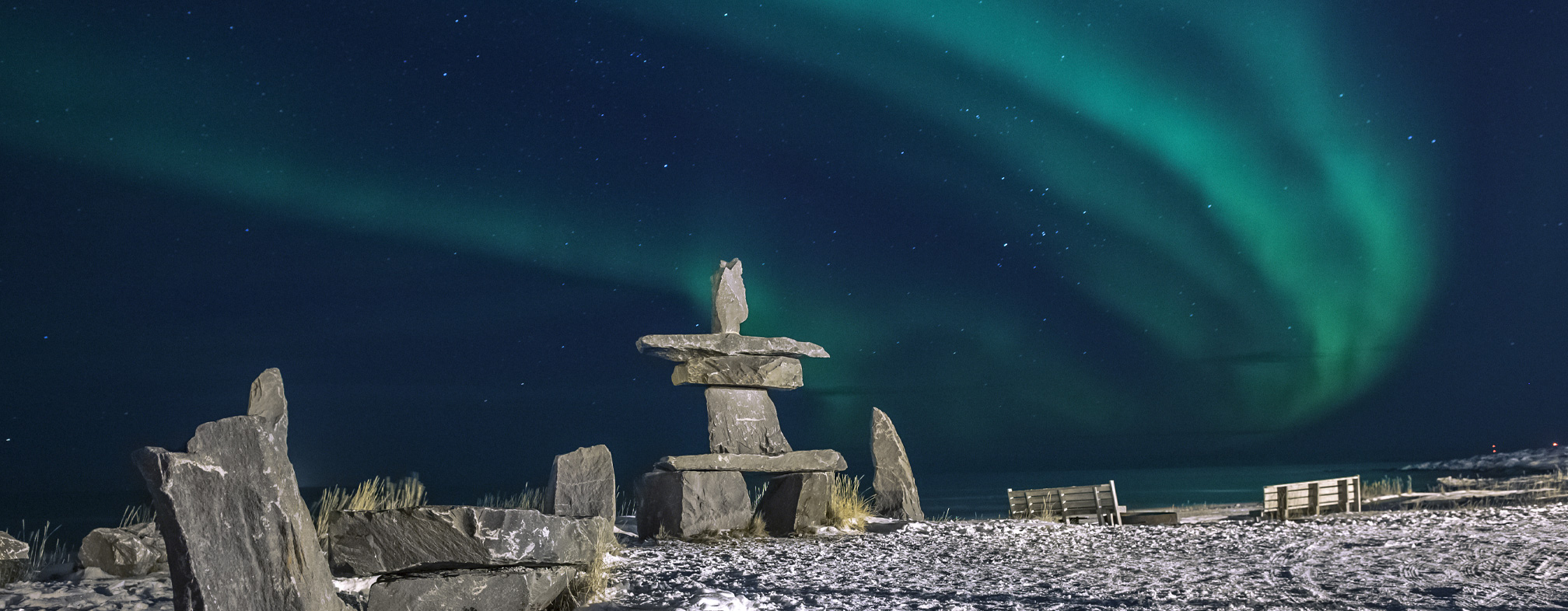Energy and water-efficiency in remote locations

Founded in 1976, the Churchill northern Studies Centre is an independent, non-profit research and education facility located 23 km east of the town of Churchill, Manitoba. It provides accommodation, meals, equipment rentals, and logistical support to scientific researchers working on a wide range of topics of interest to northern science. In addition to research, the Centre facilitates educational programming ranging from general interest courses for the visiting public to university credit courses for students. facilities include large and small dry laboratories, two classrooms, a gift shop, an observation dome, a library, herbarium, and study collections of various animal species. The Centre also has vehicles, a helicopter landing pad, a garage and comprehensive logistical support for remote field camps.
The innovative technologies used in the building include heat recovery in a difficult climate, intelligent building controls, an energy-efficient kitchen with best-in-class range hood ventilation and energy-efficient appliances, and waterless composting toilets to deal with a lack of municipal services.
Design Considerations
The site is remote and exposed with only shrubby tundra vegetation and thin gravelly soils over shallow bedrock. There are no piped municipal services for water, sewer, or gas and no prospect for any in the future. A 1-km power line connects to a Manitoba Hydro electrical service but is frequently interrupted by winter weather. A high degree of reliability and independence was therefore required for the essential services of water, wastewater, heat, and power. The remote location also makes regular maintenance an issue, so it is imperative that systems be reliable and simple. There is also no local fire service or on-site hydrant.
Cold, windy conditions of -40oC and 140 km/h winds are the norm in winter. Less access to sunlight was also a consideration from a daylighting perspective. The building envelope is designed to be air-tight and well-insulated with R-40 freezer panel construction and low-e, argonf illed, triple-glazed windows. The whole structure is raised above grade for snow drift control, thus providing a convenient space for building ventilation openings under the building protected from snow entry and minimizing mechanical elements on the building facades.
Laboratory areas had to be provided for wet/dry and clean/dirty research activities. Some soil and plant samples must be dried for an extended time and the moisture and smell has to be contained.
Some samples must be archived in a room with controlled temperature and humidity, and some experiments also need controlled temperature and humidity, especially in summer during the peak field research activity. Activities generating noxious fumes have to be conducted in high-performance/low-flow fume hoods, which have to be operated in as energy-efficient manner as possible, i.e., controlled exhaust and makeup ventilation, while maintaining good indoor air quality in the lab. Recreation rooms where residents go for entertainment and exercise have to be acoustically isolated from the bedrooms down the hall
Heating and Ventilation
The four, main building ventilation systems have ventilation heat recovery [where incoming, fresh air is pre-heated by outgoing, stale air] – a challenging accomplishment in an environment where heat recovery ventilators [HRVs] are very vulnerable to freezing. The main ventilation system is a DualCore® heat exchanger made in Manitoba and delivers 85% heat-recovery efficiency [measured over three damper cycles on one winter day] and no requirement for defrost. The other HRVs, serving the dining room and kitchen, labs, and composting toilets, rely on electric pre-heaters to keep them out of defrost mode and optimize their heat recovery performance. The DualCore® heat exchanger supplies up to 1,175 L/second of ventilation, depending on demand, and does not require any preheat.
Building controls are designed for reduced operating costs, while still being relatively simple to operate. The basic approach is to turn equipment off when not in use. for example, ventilation is supplied by multiple, dedicated units which slow down or stop when any individual unit is not needed. Local controls include occupancy sensors, Co2 sensors, timers, and variable motor speed drives. The project team can access the building automation system for monitoring and troubleshooting via internet when they are off-site. A commercial kitchen serving three meals a day to 100 people can be extremely energy intensive, due to large amounts of cook-top ventilation, hot water use, and appliance energy. The best-in-class range hood ventilation at CnSC is low-flow and variable speed, responding to the amount of cooking and providing only the amount of exhaust and makeup air required.
Solar wall panels pre-heat the large volume of fresh air for the kitchen and cafeteria, supplemented by a dedicated energy recovery ventilator which even recovers heat from the dishwasher exhaust. Energy intensive appliances such as the dishwasher were selected for best-available water and energy efficiency.
As one of the Main Centres for sub-arctic research in north America, CNSC attracts earth and life scientists from around the world, but relies on charitable donations and self-generated revenue for its on-going operation.
There are two oversized grease interceptors, one just for the dishwasher to prevent its hot drain water from interfering with the operation of the main interceptor. The interceptors are installed in a cool basement wastewater treatment room where they serve to heat the room, while cooling down and improving grease separation. waste heat from the computer room can be circulated to the underfloor plenum for heating, rather than being directly exhausted or air conditioned, and refrigeration compressor waste heat is also recirculated for space heating. All other spaces have individual thermostat-controlled electric baseboard heat. The design heat loss of the building envelope is 145 kw, plus an additional 52 kw for 2,800 L/second of ventilation.
Structure
The structure consists of an insulated panel envelope with minimal projections. The structure itself was raised above the ground for snow drift control. windows are triple-glazed. for protection, ventilation terminals are located under the building or fitted with big wall hoods. Bear bars to protect the occupants and building from polar bears were installed on openings and equipment within 4m of the ground.
Water and Wastewater
The old facility had to truck water 20 km from town, then truck back the sewage. Every effort was made to decrease this considerable cost of carbon emissions and money. The most significant measure is two large composting systems serving waterless toilets and urinals. wastewater is treated on-site to tertiary quality by two 5,000 litre biofiltration vessels located indoors and two area bed sand dispersal fields outdoors, made of manufactured sand and woodchip-and-sand layers. The permitted daily design flow is 8,000 L and design flow is only 68 L/person, compared to the metered 100+ L/person last year in the old building.
A ventilation system using a heat recovery ventilator provides continuous exhaust from the composter, with the toilets themselves acting as the exhaust fans for the washrooms. The system is water and energy efficient, keeps the washrooms odour-free, and thanks to a healthy population of red wriggler worms, automatic moistening system, compost tea removal, and the aerobic decomposition process, requires very little maintenance.
Lake water is pumped 2 km to the site in summer and treated with settling, simple cartridge filters and uv to drinking water quality. Two 13,000-litre tanks can store drinking water trucked from town in winter when the lake is frozen. untreated lakewater is distributed through separate non-potable water piping to flush-type toilets, hose bibs and drain trap primers to reduce the need for drinking water, and also to utilize grey water recycled from lavatory and shower wastewater. Drain water heat exchangers recover heat from the showers and lavatories to preheat domestic hot water.
Electrical
Lighting fixtures are high efficiency, without over-lighting spaces. The average building-wide lighting power density is a mere 7.7 w/ m2, which is 30% below ASHRAE 90.1-2007 levels for an office/ lab/dormitory building using the building area method.
The dormitory rooms contain a single overhead direct/indirect f luorescent fixture for general lighting but each bunk bed, four in each room, has a directional, wall-mounted LED light which can be turned on without disturbing other roommates.
The rooftop Aurora Borealis viewing Dome was outfitted with LED way-finding lights [like emergency exit lights in an aircraft cabin] and a switch to allow users to turn off non-essential exterior lighting for better viewing of the northern lights.
Conclusion
It is hoped that the combination of ambitious water conservation and on-site treatment will be a model of sustainability for other developments in remote communities. The technologies showcased at CnSC are scalable to larger facilities. The building meets the needs of the occupants for a modern building with all the anticipated amenities and services, while providing significant energy and water savings for the owner and environment.




